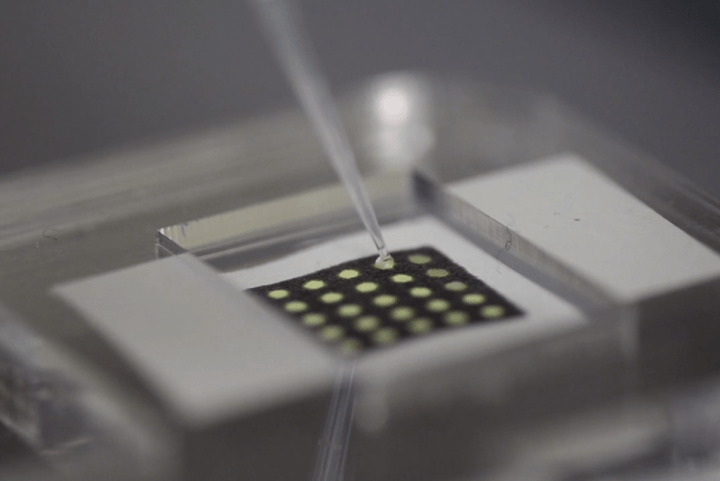
Two teams of researchers at Harvard University’s Wyss Institute for Biologically Inspired Engineering have devised a way to embed synthetic gene networks onto pocket-sized matrices of paper. These slips can be freeze-dried and stored at room temperature for up to a year and rehydrated with water whenever they’re needed.
This is noteworthy because these slips of paper can essentially be “programmed” to give visual cues when it detects certain bacteria or viruses. A very timely use case involves a strain-specific Ebola sensor, which produces certain proteins only if it detects the particular Ebola strain. In this instance, the protein stains the paper with a dark purple in less than an hour if one of two Ebola strains are detected.
One of the major benefits of this innovation, laid out in a paper titled “Paper-Based Synthetic Gene Networks,” is the extension of synthetic biology beyond laboratories. “We’ve harnessed the genetic machinery of cells and embedded them in the fiber matrix of paper, which can then be freeze dried for storage and transport — we can now take synthetic biology out of the lab and use it anywhere to better understand our health and the environment,” says lead author and Wyss staff scientist Keith Pardee, Ph.D.
These paper-based tests are also very cheap. James Collins, an author of the paper and a synthetic biologist at Boston University, estimates that each slip of this detection paper could be designed and produced in about a day and would cost between 4 and 65 cents.
There’s still room for improvement, especially when it comes to the ability to detect low concentrations of molecules. “We’re now comfortably in the picomolar range, which is getting close to where you want to be, but I think we’d like to be even lower,” Collins says.


